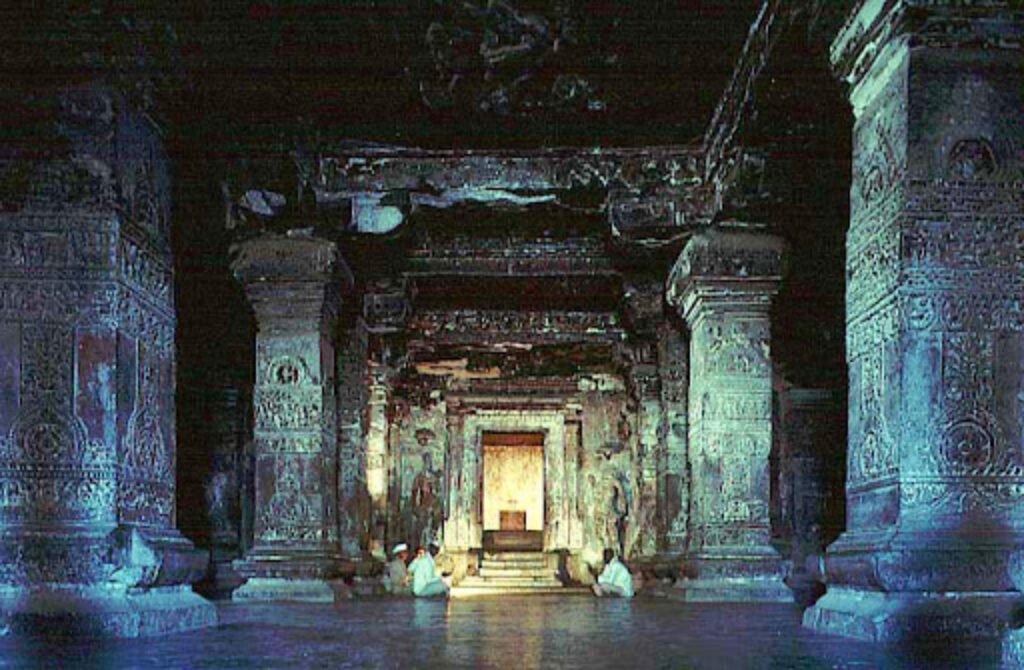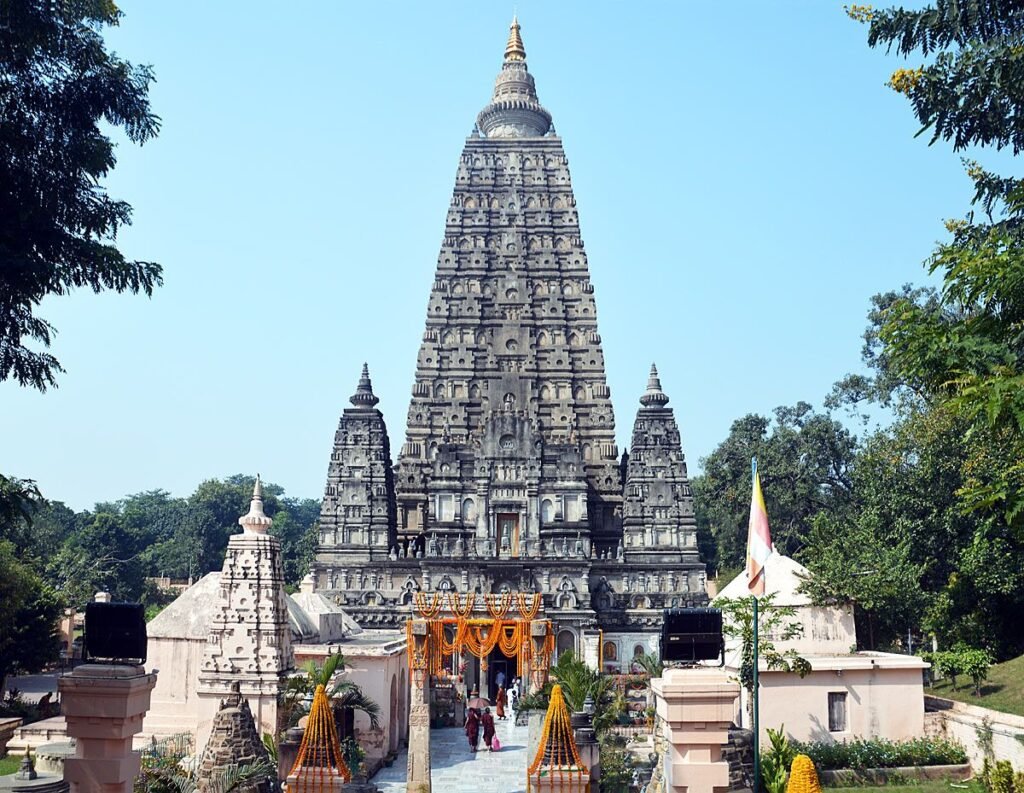
10 Oldest Temples in India: Timeless Marvels of Spiritual and Architectural Grandeur
India, often celebrated as the land of spirituality and diversity, is home to some of the world’s most ancient and revered temples. These centuries-old structures stand as testaments to the architectural brilliance and spiritual devotion of early civilizations. Let’s embark on a journey to explore the ten oldest temples in India, each with its unique history, style, and sacred significance.
1. Mundeshwari Temple, Bihar (108 AD)

Tucked away in the Kaimur district of Bihar, Mundeshwari Temple is widely regarded as the oldest functioning temple in India. Dedicated to Lord Shiva and Shakti, it exhibits a beautiful octagonal structure—an architectural rarity. The temple is still operational today, where devotees perform rituals, making it a living piece of ancient history. With inscriptions dating back to 108 AD, the temple’s simplicity contrasts with its powerful spiritual energy.
2. Kailasa Temple, Ellora (8th Century AD)

The Kailasa Temple in Ellora, Maharashtra, is an engineering marvel carved from a single rock. Built by the Rashtrakuta king Krishna I, it is part of the larger Ellora Caves complex, a UNESCO World Heritage Site. Dedicated to Lord Shiva, the temple’s intricate carvings depict scenes from Hindu mythology, with each detail showcasing the craftsmanship of ancient Indian artisans. The grandeur of the monolithic structure remains unparalleled to this day.
3. Jagatpita Brahma Temple, Pushkar (2nd Century BC)

The Jagatpita Brahma Temple in Pushkar, Rajasthan, is one of the very few temples in the world dedicated to Lord Brahma, the creator. Believed to be established in the 2nd century BC, the temple is renowned for its unique red spire and the annual Pushkar Camel Fair. The temple’s simple architecture belies its immense spiritual significance, as it continues to attract pilgrims from across the globe.
4. Shree Lingaraja Temple, Bhubaneswar (6th Century AD)

Located in the temple city of Bhubaneswar, Odisha, the Lingaraja Temple is one of the oldest and largest temples dedicated to Lord Shiva. Its origins are traced to the 6th century AD, during the reign of the Somavamsi dynasty. The temple is a quintessential example of Kalinga architecture, with its soaring spire, intricate carvings, and sprawling courtyards. The sanctum sanctorum houses a unique phallic form of Lord Shiva, known as Hari-Hara, representing both Vishnu and Shiva.
5. Dilwara Temples, Mount Abu (1031 AD)

Though younger compared to some other entries, the Dilwara Temples in Mount Abu, Rajasthan, are an extraordinary example of ancient Indian art and spirituality. Built between the 11th and 13th centuries by Chalukya rulers, these temples are dedicated to Jain Tirthankaras. The marble carvings inside the temples are so finely detailed that they resemble delicate lacework. Each pillar, ceiling, and wall narrates stories from Jain mythology, making these temples a true masterpiece of craftsmanship.
6. Mahabodhi Temple, Bodh Gaya (3rd Century BC)

One of the most sacred Buddhist pilgrimage sites, the Mahabodhi Temple in Bodh Gaya, Bihar, marks the location where Lord Buddha attained enlightenment under the Bodhi tree. The original structure was built by Emperor Ashoka in the 3rd century BC, although the current structure dates back to the 5th-6th century AD. A UNESCO World Heritage Site, the temple’s soaring central spire stands out as a symbol of Buddhist spirituality, attracting devotees and tourists alike.
7. Varadharaja Perumal Temple, Kanchipuram (3rd Century AD)

Situated in the temple town of Kanchipuram, Tamil Nadu, Varadharaja Perumal Temple is a significant Vaishnavite temple built around the 3rd century AD by the Pallavas. The temple is dedicated to Lord Vishnu and is one of the 108 Divya Desams, or sacred places of worship in Vaishnavism. Its Dravidian-style architecture, massive gopurams (gateway towers), and intricately sculpted pillars make it an enduring symbol of ancient Indian temple architecture.
8. Kanchipuram Kailasanathar Temple (7th Century AD)

Another jewel from Kanchipuram, the Kailasanathar Temple is dedicated to Lord Shiva and was built during the Pallava dynasty in the 7th century AD. This temple is the oldest in the town and stands as a brilliant example of early Dravidian architecture. The temple’s detailed carvings and rock-cut sculptures reflect the artistic prowess of the time. The sanctity and peaceful atmosphere of the temple make it a haven for spiritual seekers.
9. Tungnath Temple, Uttarakhand (1,000 Years Old)

Located in the Garhwal region of Uttarakhand, Tungnath Temple is the highest Shiva temple in the world, perched at an altitude of over 12,000 feet. The exact date of its construction is unknown, but it is believed to be over 1,000 years old. According to legend, it was built by the Pandavas of the Mahabharata to seek forgiveness from Lord Shiva. Surrounded by snow-capped mountains, the temple’s location offers breathtaking views and a deeply spiritual ambiance.
10. Konark Sun Temple, Odisha (13th Century AD)

While relatively younger compared to other temples on this list, the Sun Temple in Konark, Odisha, is an awe-inspiring feat of architecture. Built in the 13th century by King Narasimhadeva I, the temple is designed in the shape of a colossal chariot with intricately carved wheels, pillars, and walls. Dedicated to the Sun God, the temple is not just a place of worship but a celebration of life, light, and celestial energy. It has deservedly secured its status as a UNESCO World Heritage Site, a testament to its cultural and historical significance.
Conclusion
India’s oldest temples are more than just places of worship—they are timeless monuments that echo the spiritual, cultural, and artistic legacy of an ancient civilization. Whether carved from single rocks or built with intricate stonework, these temples continue to inspire awe and reverence. Each temple, standing tall for centuries, offers a glimpse into India’s profound devotion and architectural brilliance that has withstood the test of time.
By visiting these historic wonders, one not only steps into a sacred realm but also connects with the history, spirituality, and artistic genius of ancient India







